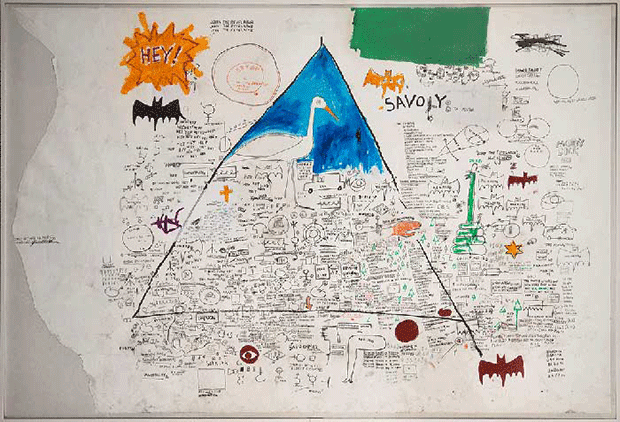
Jean-Michel Basquiat's 80s notebooks revealed
Basquiat: The Unknown Notebooks at the Brooklyn Museum includes 160 unseen sketch pages from 1980-87
Like many an artist, Jean-Michel Basquiat used his notebooks and journals as a workshop of ideas in which to test out many of the thoughts that would eventually make their way into his paintings. Indeed, in those early notebooks, dating from 1980 and 1981, he would draw images of skulls, crowns and tepees, which can be found in later works.
Now, eight of those notebooks, comprising 160 images never seen before in public, are due to go on view at the Brooklyn Museum next April. Basquiat: The Unknown Notebooks” (3 April-23 August 2015) includes 160 unbound pages from journals the artist filled with sketches and notes between 1980 and 1987.
They’re owned by the renowned art collector Larry Warsh, and will be supplemented by another 30 or so drawings and paintings from other collections.
Tricia Laughlin Bloom, who co-organised the show says it will highlight another key driver in Basquiat’s work. “So much attention is given to him as a Neo-expressionist painter, but there’s another piece, and something else was driving him, which was his social conscience, his love of language, and his desire to get a message across,” she told The Art Newspaper. “One of his strategies is to compress a lot of meaning into a single image or word, and the notebooks really bring that out.” According to Bloom, in his journals, Basquiat would sketch only on the right-hand page, leaving the left side blank. Sometimes, he would write down only a single word. “It was a very conscious decision,” Bloom says. “Everybody has grocery lists and wish lists, but he treated these very carefully. He wanted to give the words some space. He has these extended surreal narratives, and it’s a bit of a puzzle to pin down if he’s referencing something specific, or if he’s speaking more generally.”
Check out our many great painting titles in the stor including: Painting Abstraction, Painting Today. And get ready for Painting Beyond Pollock, our forthcoming lively and accessible history of European and American painting from the mid-20th century onwards which publishes in April.